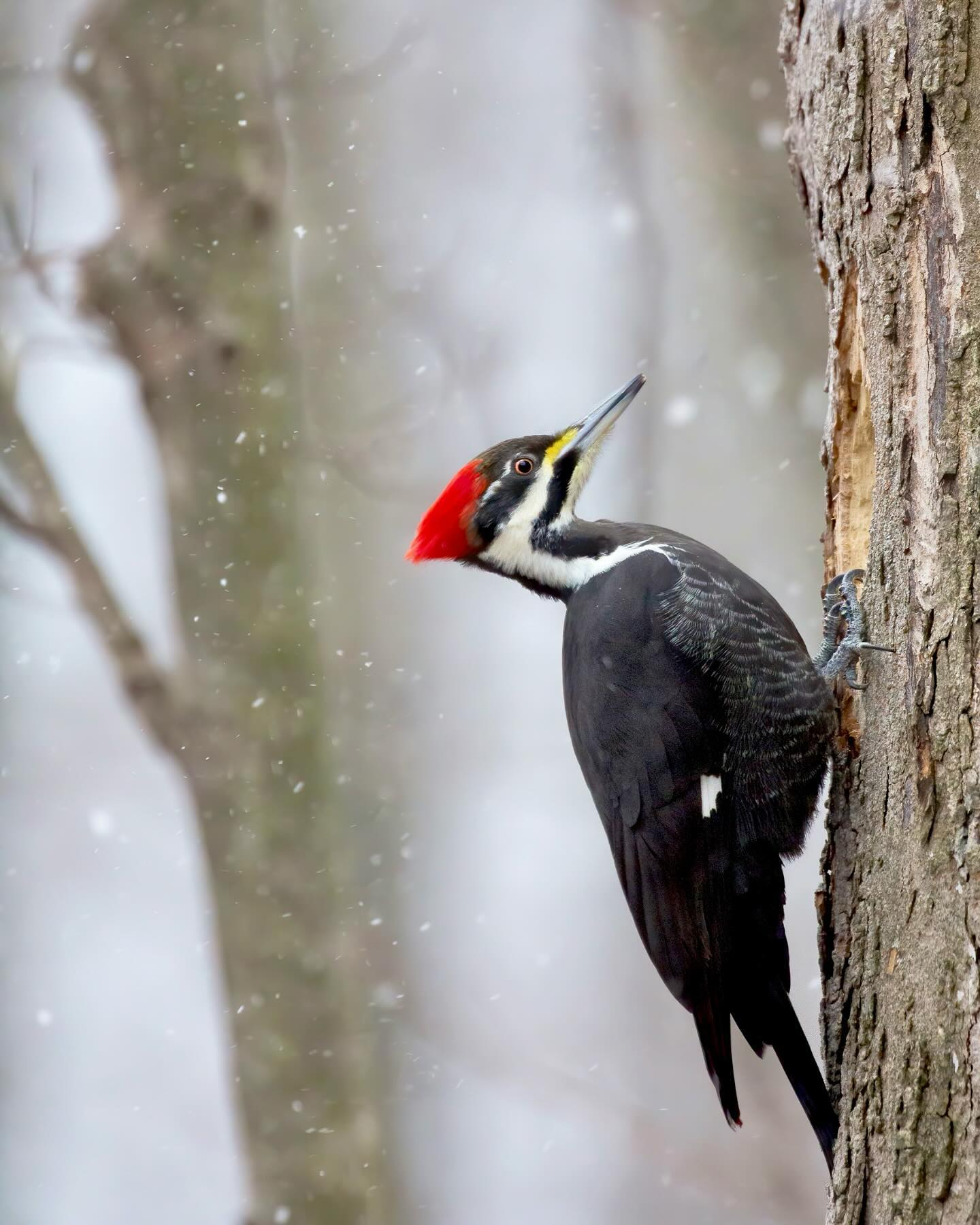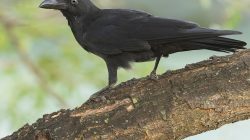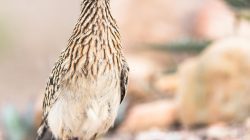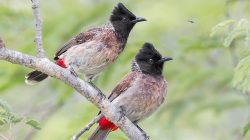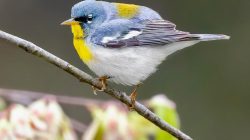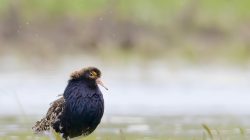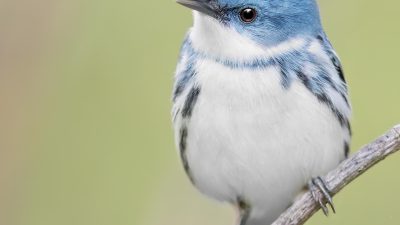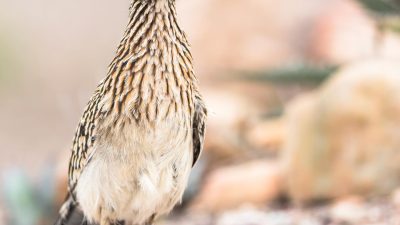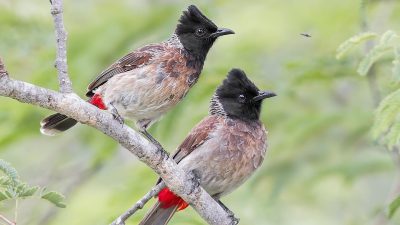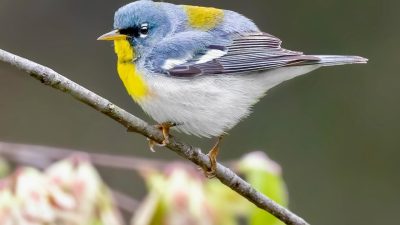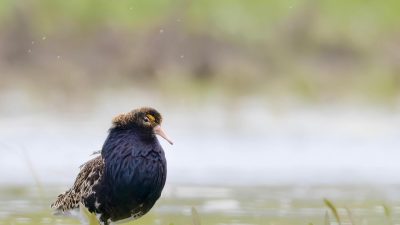Pileated Woodpeckers (Dryocopus pileatus): A Deep Dive into Their Life and Habits
Diajar.net – The Pileated Woodpecker, known scientifically as Dryocopus pileatus, carries a name that reflects both its striking physical appearance and its place in the avian world. The genus name Dryocopus is derived from the Greek words “dryos” meaning “oak” and “kopos” meaning “cut,” a reference to the woodpecker’s affinity for trees, especially oak trees. The specific epithet pileatus comes from the Latin word “pileus,” which means “cap,” referencing the bird’s distinctive red crest atop its head, giving it a “capped” appearance. This name aptly encapsulates both the bird’s behavior and its striking feature, making it one of the most recognizable woodpeckers in North America.
Appearance
The Pileated Woodpecker is one of the largest woodpecker species in North America, making it a notable presence in its forested habitats. An adult Pileated Woodpecker can reach a length of 16 to 19 inches (40 to 50 cm) from beak to tail, with a wingspan of approximately 26 to 30 inches (66 to 76 cm). The males and females are very similar in appearance, with the most notable difference being the size of the red crest.
The bird’s most distinguishing feature is the bright red crest on its head, which contrasts sharply with the bird’s black body and white stripes on the face and neck. This red crest, which is often held upright, gives the Pileated Woodpecker a crown-like appearance. Additionally, the bird has a long, chisel-like bill that is ideal for excavating the bark of trees in search of insects, particularly ants and beetles. Its strong legs and tail feathers are also well-adapted for climbing and providing support as it taps and drills into tree trunks.
The Pileated Woodpecker’s overall coloration consists of black feathers on the body, with white wing linings that are especially visible when the bird is in flight. It has a white underside and large white patches on its face and neck, accentuating the stark contrast between the red crest and the rest of its body. The eyes are dark and prominent, enhancing the bird’s alert and energetic appearance.
Distribution
The Pileated Woodpecker is found across much of North America, from southern Canada to the northern United States, and down to parts of Mexico. Its range includes temperate forests, particularly in regions where mature trees and large tracts of woodlands are abundant. Historically, the Pileated Woodpecker’s range extended into parts of the Great Plains, but its primary habitat is now concentrated in the eastern and western United States.
Pileated Woodpeckers thrive in dense, mature forests that contain large, dead or dying trees, which provide them with the resources needed for foraging and nesting. The bird is especially common in deciduous forests, though it can also be found in mixed forests with conifers. The species is generally absent from regions with heavily fragmented habitats, as it relies on large trees for both food and nesting sites.
Geography
Geographically, the Pileated Woodpecker occupies a diverse range of environments, adapting to different tree types and elevations. In the United States, the bird is most commonly found in the northeastern regions, including the Appalachian Mountains, the Great Lakes area, and parts of the Pacific Northwest. In Canada, it is commonly seen in the forests of British Columbia and parts of Alberta, extending into the southern parts of the country. The species is also found in the more temperate forests of Mexico, especially in the Sierra Madre mountain ranges.
The Pileated Woodpecker’s geographic range is influenced by forest density and the availability of large trees suitable for excavation. The bird is not often found in urban areas, but it does occasionally adapt to suburban environments where there are sufficient wooded areas. However, its presence in these areas tends to be less frequent than in remote, undisturbed forests.
Habits and Lifestyle
Pileated Woodpeckers are solitary and territorial birds, often found alone or in pairs, especially during the breeding season. Their primary activity is foraging for insects, which they extract from beneath the bark of trees. The Pileated Woodpecker’s behavior is characterized by loud drumming, which serves both as a foraging technique and a territorial call. These birds drum on tree trunks with their powerful bills, producing a loud, resonant sound that can be heard over long distances.
These woodpeckers are known for their ability to excavate large cavities in trees, often leaving behind rectangular holes in the bark that are characteristic of the species. These cavities serve as both feeding sites and nesting sites, and their size is often large enough to be noticeable even from a distance.
Pileated Woodpeckers are non-migratory, remaining in their territories year-round. During the winter months, they continue to forage on trees, utilizing their excellent climbing abilities to maintain access to their food sources. They are also known to be highly vocal, producing a variety of calls, including sharp, high-pitched notes and more resonant drumming sounds.
These woodpeckers often nest in decayed or dead trees, which offer both food and shelter. In terms of social structure, Pileated Woodpeckers tend to be relatively solitary, although during the breeding season, a male and female will work together to create a nesting cavity.
Diet and Nutrition
Pileated Woodpeckers have a diet that is predominantly insectivorous, with ants, beetles, and termites being the main components. They are particularly fond of carpenter ants, which they extract from under the bark of trees. Their long, strong bills are well-suited for drilling into the bark and accessing the insects hidden inside.
In addition to insects, Pileated Woodpeckers will sometimes feed on fruits, nuts, and berries, although these make up a smaller portion of their diet. They are also known to forage for fungi and other plant material when insects are less abundant, particularly during the colder months when insect activity is reduced.
To locate their prey, Pileated Woodpeckers use their keen sense of sight and hearing. They listen for the sound of insects moving beneath the bark and then peck vigorously at the wood to expose the insects. They also use their long, sticky tongues to extract insects from deep within the tree cavities.
Despite their insect-based diet, Pileated Woodpeckers play a critical role in forest ecosystems by helping control insect populations and facilitating the decay of dead trees, which are vital for the health of the forest.
Population
The population of the Pileated Woodpecker is relatively stable, with the species being widespread across its range. The bird has adapted to living in a variety of forested environments, and its population has been bolstered by conservation efforts that have protected its habitat. However, in some areas, the population of Pileated Woodpeckers may be affected by habitat loss due to logging, urban development, and forest fragmentation.
Estimates of the total population of Pileated Woodpeckers vary, but it is believed that there are approximately 1 million individual birds across their range. This number has remained relatively stable due to the bird’s adaptability to different habitats and its ability to thrive in forests that are rich in dead trees, which are essential for both feeding and nesting.
In the United States, the bird is considered to be a species of “least concern” by the International Union for Conservation of Nature (IUCN), indicating that the population is not currently at risk. However, in some regions, especially those where forests have been significantly altered or fragmented, conservation efforts are still necessary to maintain healthy populations.
Number of Populations
The Pileated Woodpecker is found in several distinct populations across North America, each adapted to the unique conditions of its environment. The eastern population, which inhabits the forests of the Appalachian Mountains, the Great Lakes region, and parts of the northeastern United States, is the most well-known. A western population can be found in the forests of the Pacific Northwest, including British Columbia and parts of Oregon and Washington.
In Mexico, there is a separate population that is found in the Sierra Madre mountains, particularly in regions where the habitat is suitable for the woodpecker’s needs. These populations are separated by large expanses of unsuitable habitat, which helps prevent interbreeding and leads to some degree of geographic and genetic isolation.
While these populations are not isolated enough to be considered distinct subspecies, they do exhibit slight variations in behavior and morphology based on their respective environments. In regions where the habitat is more fragmented, populations may face additional challenges in maintaining their numbers and genetic diversity.
Conservation
The Pileated Woodpecker is currently not at risk of extinction, and its population is relatively stable. However, like many forest-dwelling species, it faces threats from habitat destruction, particularly in areas where forests are cleared for agriculture or urban development. Logging practices that remove dead or dying trees, which are crucial for the bird’s survival, can also have a negative impact on their population.
Conservation efforts for the Pileated Woodpecker focus on habitat protection and management. Forests that are managed for biodiversity, with an emphasis on maintaining large, mature trees and deadwood, provide the ideal environment for this species. In areas where logging is necessary, sustainable practices that leave standing dead trees are encouraged to ensure the bird has access to suitable nesting and foraging sites.
Efforts to restore forests and create corridors between fragmented habitats have also contributed to the stability of Pileated Woodpecker populations. In some parts of the United States, forest restoration projects and the establishment of protected areas have allowed the species to thrive in regions that were once threatened by deforestation.
In summary, the Pileated Woodpecker is a fascinating and important species in North American ecosystems. Its remarkable adaptations, distinctive appearance, and role in forest dynamics make it a bird worth preserving. While it faces challenges, ongoing conservation efforts are helping to ensure that this striking woodpecker continues to thrive in its natural habitats.
